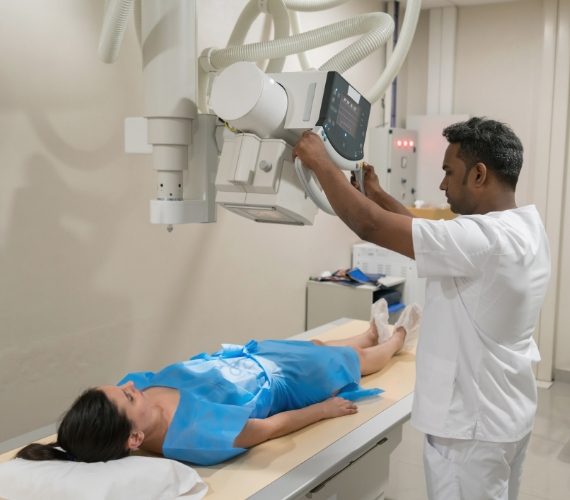Login
What is an X-ray?
X-rays are a form of electromagnetic radiation, just like visible light. In a health care setting, a machine sends individual X-ray particles, called photons. These particles pass through the body. A computer or special film is used to record the images that are created.
Structures that are dense (such as bone) will appear white because they will block most of the X-ray particles. Metal and contrast media (special dye used to highlight areas of the body) will also appear white. Structures containing air will be black. Muscle, fat and fluid will appear as shades of gray.
No Appointment Necessary
X-rays can be obtained at select ChristianaCare imaging locations without an appointment - walk-ins are always welcome. For more information on locations that offer x-ray services, please check our Imaging Locations page.
Preparing for Your X-ray
X-rays typically do not require any special preparation. Because radiation is involved, it is important to inform the technologist prior to the exam if you are or might be pregnant, or if you have an IUD inserted.
If abdominal studies are planned and you have had a barium contrast study (such as a barium enema, upper GI series or barium swallow), or if you have taken medications containing bismuth (such as Pepto-Bismol) in the last four days, the test may be delayed until the contrast has fully passed.
The Procedure
The positioning of your body, the X-ray machine and film depends on the type of study and area of interest. Multiple individual views may be required. Much like conventional photography, motion causes blurry images on radiographs.
For this reason, you may be asked to hold your breath or not move during the brief exposure (about 1 second). There is no discomfort from X-ray exposure, although during the scan it may be necessary for you to sit in an uncomfortable position for a short period of time.

Do X-rays pose a health risk?
For most people, health risks from X-ray exposure are extremely low. Young children and developing fetuses, however, are sensitive to the risks of X-rays. Women should tell health care providers about suspected pregnancy before being exposed to X-rays. Please ask your technologist or doctor if you have any questions or concerns.

